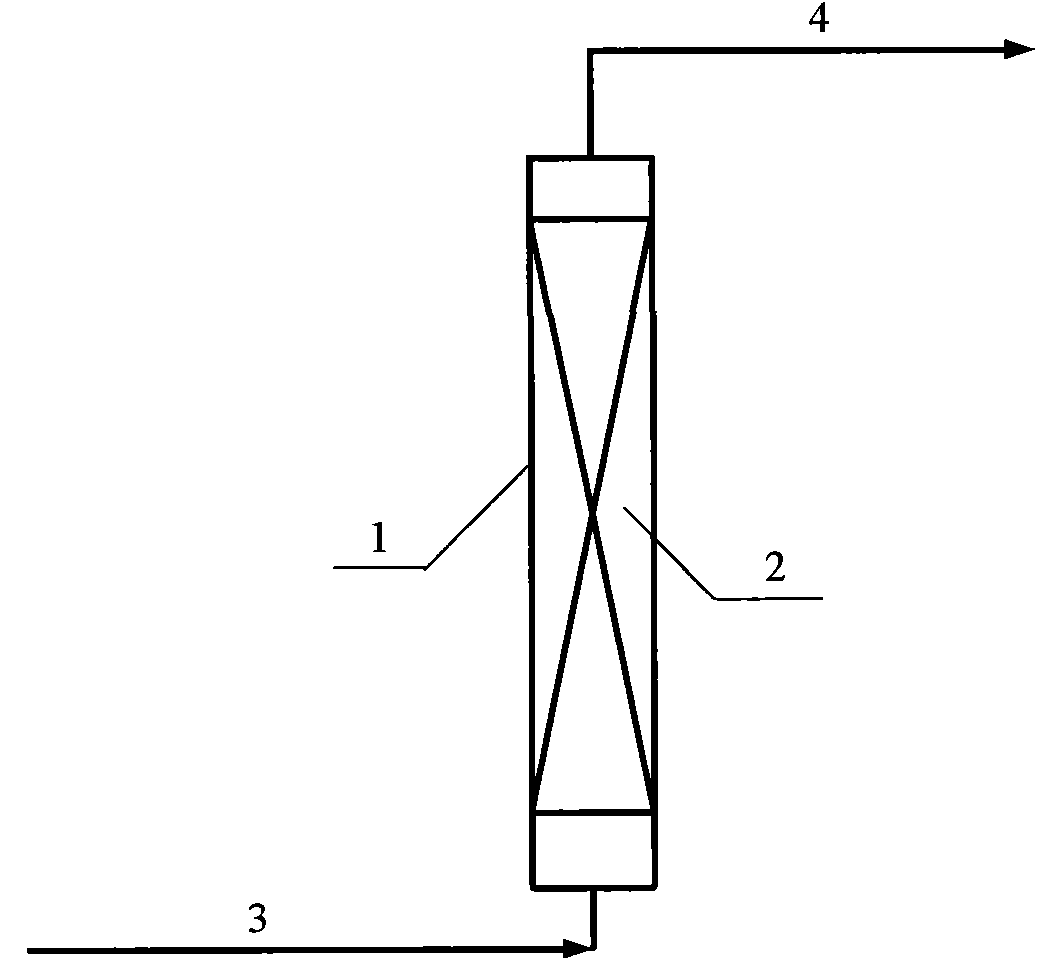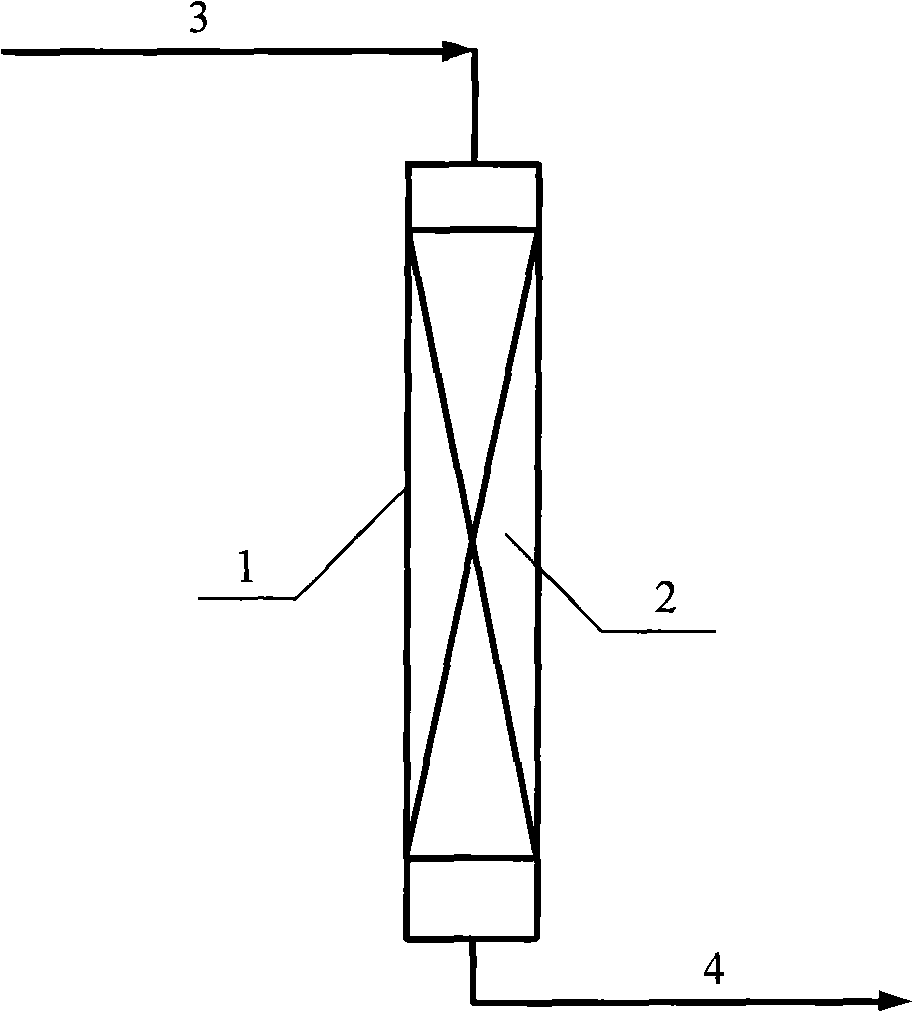Method for separating glycol from butanediol
A separation method and technology for butanediol, applied in the field of separation of ethylene glycol and butanediol, can solve the problems of high energy consumption, complex process and high separation energy consumption, and achieve low energy consumption, simple process and simple separation process. Effect
- Summary
- Abstract
- Description
- Claims
- Application Information
AI Technical Summary
Problems solved by technology
Method used
Image
Examples
Embodiment 1
[0017] according to figure 1 Shown flow process, the ethylene glycol solution containing 1,2-butanediol (the mass content of 1,2-butanediol is 1.00%) is that 15 millimeters, height are 150 millimeters with the flow rate of 5 g / min The top of the adsorption column enters, and the adsorption column is filled with Suqing brand DA201-C resin, the operating pressure is normal pressure, the temperature is 40 ° C, and the mass fraction of ethylene glycol obtained at the bottom of the column is 99.99%.
Embodiment 2
[0019] according to figure 1 Shown flow process, the ethylene glycol solution containing 1,2-butanediol (the mass content of 1,2-butanediol is 0.10%) is 15 millimeters from inside diameter, height is 100 millimeters with the flow rate of 5 g / min The top of the adsorption column enters, and the adsorption column is filled with Suqing brand DA201-A resin, the operating pressure is 1MPa, the temperature is 20°C, and the mass fraction of ethylene glycol obtained at the bottom of the column is 100.00%.
Embodiment 3
[0021] according to figure 1 Shown flow process, the ethylene glycol solution containing 1,2-butanediol (the mass content of 1,2-butanediol is 3.00%) is 15 millimeters from inner diameter, height is 200 millimeters with the flow rate of 5 g / min The top of the adsorption column enters, and the adsorption column is filled with Suqing brand DA201-D resin, the operating pressure is 0.5MPa, the temperature is 80°C, and the mass fraction of ethylene glycol obtained at the bottom of the column is 99.99%.
PUM
 Login to View More
Login to View More Abstract
Description
Claims
Application Information
 Login to View More
Login to View More - R&D Engineer
- R&D Manager
- IP Professional
- Industry Leading Data Capabilities
- Powerful AI technology
- Patent DNA Extraction
Browse by: Latest US Patents, China's latest patents, Technical Efficacy Thesaurus, Application Domain, Technology Topic, Popular Technical Reports.
© 2024 PatSnap. All rights reserved.Legal|Privacy policy|Modern Slavery Act Transparency Statement|Sitemap|About US| Contact US: help@patsnap.com










